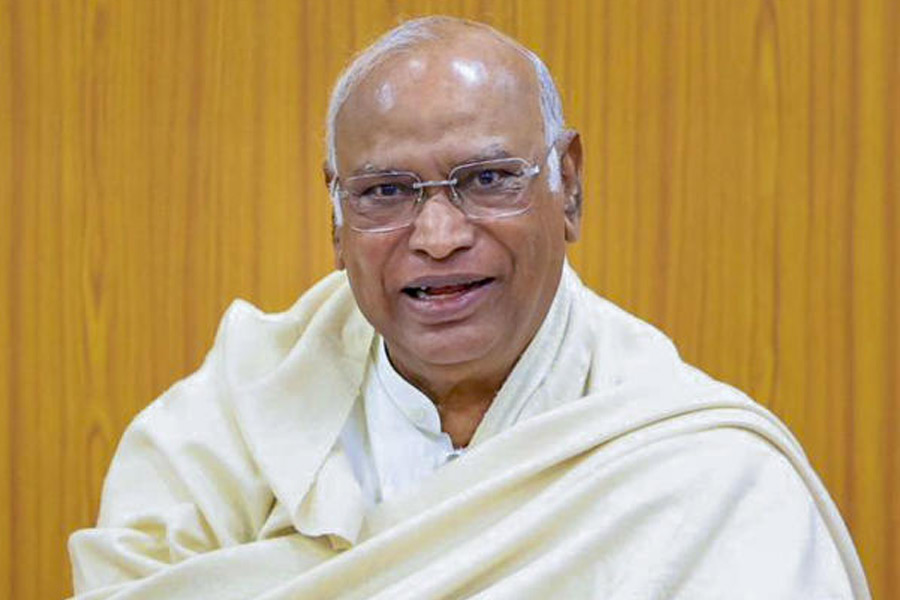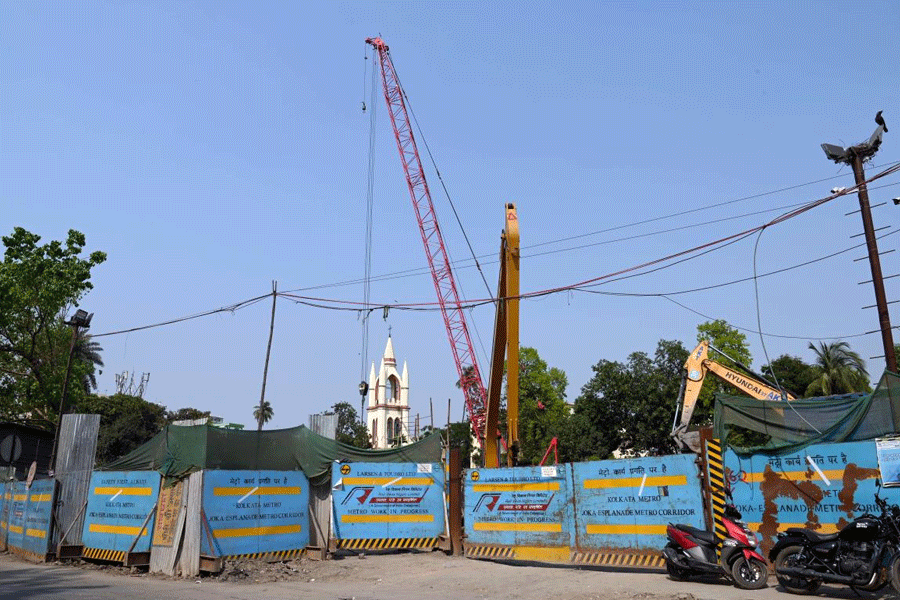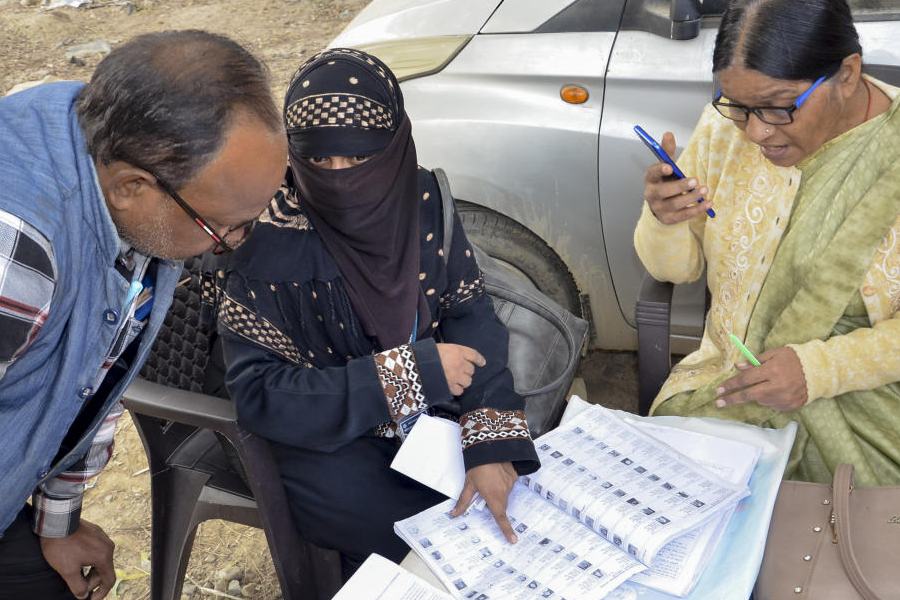 |
| Khagen Mahanta with son Angaraag (Papon) Mahanta in Guwahati. File picture |
Guwahati, June 12: It makes sense of the nonsensical, it makes sense of love through song, defines spring and tells the Assamese people who they are — in Khagen Mahanta’s voice, the Bihunaam is the definition of a community.
Matter of fact, Bihu didn’t need to make sense when it so wished. “Expect a nonsensical first line that in some way will refer to something beautiful in Nature. But wait for the second — it relates to one’s love and lover, man or woman,” says Pradip Acharya, teacher of English and translator.
So Khagen Mahanta would sing “Dhonxiri parehoi dhopoliyai ahilo, jiralo Koliyaborot. Tomake bisari ghor bari erilo oi, tomak nepalohi ghorot… (I came rushing by the banks of the Dhansiri, and rested in Kaliabor… I gave up my home and hearth for you and didn’t find you at your’s)….
 |
| People pay tribute to Khagen Mahanta at his residence in Guwahati on Thursday. Picture by UB Photos |
As lovelorn and heartrending as that may have been to the lovestruck, the funny cute bit that makes a Bihu a Bihu would follow soon enough… ‘Ei phale kon gol, bukure dhone gol, khojotena mari gol, bone majoni dilahi oi, poka tul tul bilahi oi, pasit bhorai dilahi oi, gote gote gilibor mon… (Who’s gone this way, it’s my love, killing the grass with her feet… you’ve brought me ripe tomatoes which I want to swallow whole…!)’ It didn’t have to make sense really, just like the ‘Parsley, Sage, Rosemary and Thyme…’ that embellish Paul Simon and Art Garfunkel’s Scarborough Fair….
A thousand miles apart, folk is still folk, ballads are ballads, love songs are just that, love songs. “Bihu is a festival of spring and fertility and it’s about love,” says Acharya. And when it came to the Bihu, Khagen Mahanta said it and sang it just right.
“Mahanta also collected Bihu songs in various forms. Had he not sung and recorded them, they would have been lost. They are sung today because he gave them back to the people,” says Acharya. It would be thanks to a rare few like Mahanta that words such as jaat (add-ons to a verse) the jojona (the leap-off point in a Bihunaam) are now back as part of Bihu parlance, a fightback of the original in the age of the all-pervading remix.
“Khagen Mahanta was made by God to sing Bihu,” Bhupen Hazarika had once told this correspondent during an interview.
In the Assam of the past, when Bihu was bereft of the frills it now carries (choreographed dance steps and moves, plastic gam kharus et al) Mahanta would with wife Archana Mahanta hold fort as the proud proponents of a folk form that had seen and survived the rigours of time — from being once considered obscene given its fertility factor and the pelvic thrusts that mark its dance, to becoming “acceptable” socially through the Bongeet of Anandiram Das and Rudra Barua, to being what it is now, the signature tune of a people.
While Khagen and Archana Mahanta would stand tall with their Bihu, Rameswar Pathak and wife Dhonoda Pathak would go from Bihutoli to Bihutoli in the lower Assam districts singing their Kamrupi Lokogeet, uncompromising students of a folk form they worshipped.
By the banks of the Godadhor, it would be Pratima Barua, insisting on singing nothing but the Goalparia Lokageet, so much so that Khagen and Archana Mahanta and Rameswar and Dhonoda Pathak and Pratima Barua would soon become symbols, turning their art into institutions that would stay unchallenged forever. So much so that theirs would perhaps be the last-ever age of titles — Khagen Mahanta would be crowned ‘Bihu Xomrat’ by his people, as Anandiram Das would be ‘Bonkonwar’, Rudra Barua ‘Luitkonwar’….Before them Jyoti Prasad Agarwala would be ‘Rupkonwar’ and Bishnu Prasad Rabha ‘Kolaguru’… Bhupenda after his death would be titled Bishwa Ratna by the Asam Sahitya Sabha.
“Khagen was one who pushed Assamese folk music, especially the Bihugeet, to new heights with his inimitable style. After being associated with him so closely for more than four decades, I have serious doubts about whether we will come across the likes of Khagen in the future,” says Assamese writer, composer and singer Lakshahira Das.
For a generation that listened to Okonir Mel on All India Radio every Sunday morning in the Seventies, Mahanta would be known for teaching children how to sing ‘Ma ami Xodiyale jamei.’ He’d be known for his ‘Kauri pore, kolore patote kauri pore…’, he’d be known for the many Borgeets he sang, he’d be cherished for the many songs he sang of his brother-in-law Keshav Mahanta, poet, writer and songwriter.
And yet Khagen Mahanta’s Bihu perhaps would remain the most endearing of all.
It’s what his son Angaraag (Papon) Mahanta now takes forward through cities and towns through his Coke Studio “recreations”.
That’s the story of Bihu, and Khagen Mahanta.










